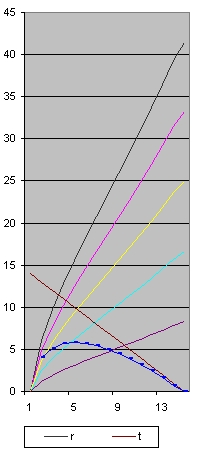
Those parameters reflect the current state of art. See Precision Cosmology from WMAP
The black line shows the outer edge of the universe.
The blue line shows the path of a lightray towards an observer 13.74 b years after the Big Bang.
The brown line shows the theoretical light cone from the observer. This line makes an angle of 45 degrees with the horizontal time axis. This angle shows that the dimensions of the time axis and the x axis are the same. Both are in billion light years.
For all the three pictures this is the same. That means you can compare them. What this also shows is that the Black Line is almost identical as a linear world model with expansion factor of 3.